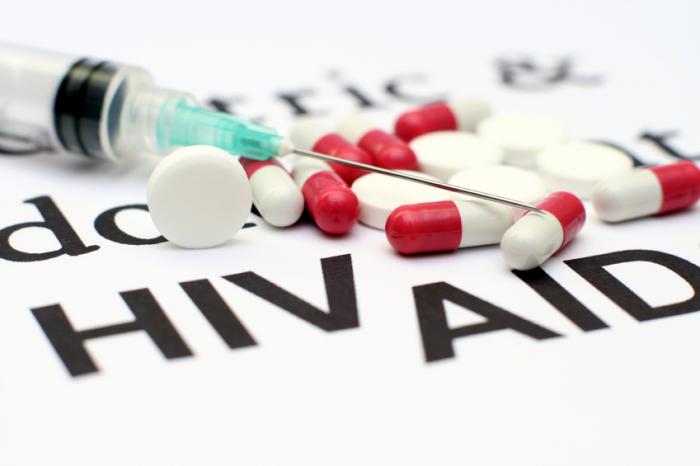
The scientists designed a protein that simultaneously binds to two sites on the surface of the virus, which blocks it from entering a host cell.
This compound is the broadest and most potent entry inhibitor described so fa.
Unlike antibodies, which fail to neutralize a large fraction of HIV-1 strains, this protein has been effective against all strains tested, raising the possibility it could offer an effective HIV vaccine alternative.
The researchers at The Scripps Research Institute claim that the project is the culmination of more than a decade's work on the biochemistry of how HIV enters cells.
The results of the study, which are published in the journal Nature, demonstrate how the new drug candidate blocked every strain of HIV-1, HIV-2 and SIV (simian immunodeficiency virus), including the variants that are most difficult to block.
The new drug was also found to protect against doses of the virus higher than those that normally occur in human transmission for at least 8 months after injection.
New protein was engineered following previous research on the CCR5 co-receptor
When a cell is infected by HIV, it inserts its own single-stranded RNA into the host cell. This insert of genetic code allows the virus to transform the cell into a "manufacturing site" for HIV.
However, the Scripps researchers had previously investigated a co-receptor - CCR5 - that could be used to prevent infection by manipulating related proteins. CCR5 is the first "anchor point" on the surface of a cell that HIV binds to before it can penetrate the cell.
When the researchers did their original work on CCR5, people thought it was interesting, but no one saw the therapeutic potential. That potential is starting to be realized.
Using the CCR5 work as a point of departure, the scientists designed a protein that mimics the receptor and simultaneously binds to two sites on the surface of the virus, which prevents it from entering a host cell.
When antibodies try to mimic the receptor, they touch a lot of other parts of the viral envelope that HIV can change with ease. So the researchers have developed a direct mimic of the receptors without providing many avenues that the virus can use to escape, so they catch every virus thus far.
A delivery mechanism for the drug candidate was designed using an engineered adeno-associated virus. This is a small, relatively harmless virus that does not cause disease. The adeno-associated virus turns cells into manufacturing sites that churn out enough of the new protective protein to potentially last for decades.
The data published by the team shows that the new drug candidate binds more strongly to the HIV-1 envelope than the best neutralizing antibodies currently known to work against the virus. Although it will be years before the protein can be tested in humans, it has been successful against SIV in a macaque model.
Recently, we looked at news that a recombinant strain of HIV exhibiting unprecedented aggression has been identified in Cuba.
Scientists researching this new HIV strain found that, after binding to CCR5, the virus moves to the next co-receptor - CXCR4 - much more quickly than other HIV strains. The move of the virus to CXCR4 is typically associated with onset of AIDS symptoms.
While this transition from CCR5 to CXCR4 is normally very difficult, the recombinant HIV variant was found to contain a protease that makes this transition easier to occur and also enables the virus to replicate in greater numbers than usual.
References:
1. AAV-expressed eCD4-Ig provides durable protection from multiple SHIV challenges, Matthew R. Gardner, et al., Nature, doi: 10.1038/nature14264, published online 18 February 2015, abstract.
2. Scripps Research Institute news release, accessed 18 February 2015 via Newswise.

No comments:
Post a Comment